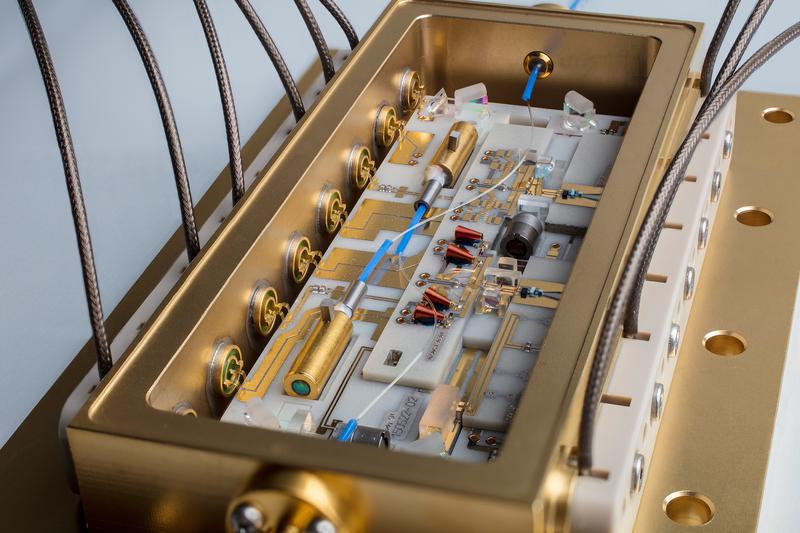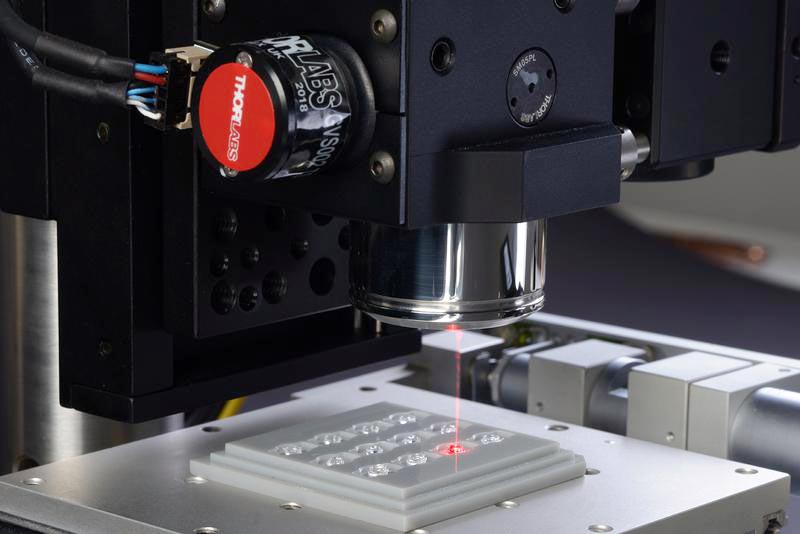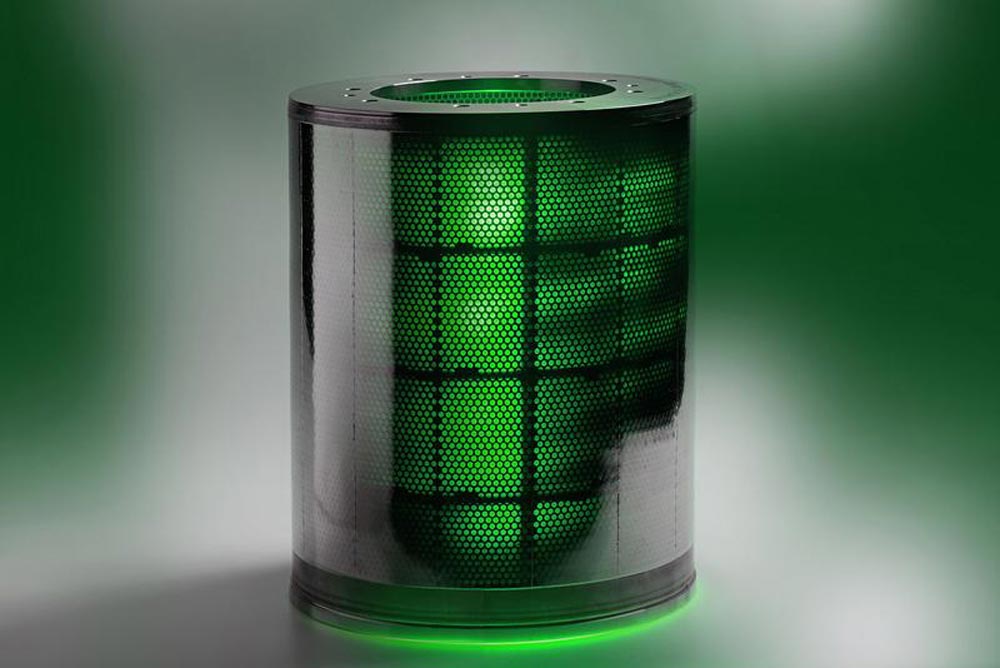

An inspection robot checking the completeness of an aircraft fuselage shell.
Fraunhofer IFF
Airliners like the Airbus A380 are custom made and thus hardly different from other capital goods like custom machines or plants. Each airline attaches importance to custom interiors and has its planes modified for its specific needs.
While one airline wants as many rows of seats as possible accommodated, another places emphasis on comfort and allows passengers somewhat more legroom. The situation is similar for monitors, luggage compartments and ventilation systems for instance. All of these requests entail custom manufacturing with thousands of small parts that always have to be positioned and mounted anew.
This makes assembly and subsequent quality assurance very difficult. Workers get the specifications from paper documents and compare each part with them manually. The number of parts inspected for an aircraft like the A380 is huge. Up to 40,000 rivets hold each of the twenty aircraft fuselage shells together. The correctness of each of the up to 2,500 attached parts has to be checked. Error detection is time-consuming and subsequent correction is sometimes extremely expensive.
Robot Compares Components with CAD Data
In the future, workers will receive support when they are checking for errors. An automatic inspection system reliably detects errors during assembly. Researchers at the Fraunhofer IFF were contracted to develop it by Premium AEROTEC GmbH, a developer and manufacturer of structures and production systems for aircraft. The technology has been field tested in pilot systems that independently inspect every mounted part and joint on aircraft fuselage shells.
The system consists of a robotic arm with a specially developed sensor head attached. Equipped with image sensors and 3D sensors, the head automatically scans every relevant inspected feature – between 1000 and 5000 – on fuselage shells. From any position, it generates absolutely reliable, high resolution measured data on the state of assembly of the real mounted parts.
The system extracts the data it needs from the 3D CAD data on the fuselage shells. These specify the desired result and also contain all of the coordinates of the inspection points. At the same time, the system uses these data to generate virtual measured data of the inspected features – in the form of synthetic images and 3D point clouds. Every joint and every single mounted part is represented exactly in them.
During an inspection, the system overlays the real measured data with the virtual specifications, factoring in image area and camera angle automatically. When both sets of measured data match, i.e. the mapped parts have been mounted correctly, the system marks the parts virtually with green for correct. If it detects discrepancies, they are marked in red. Uncertainties are marked in yellow. Workers can view different evaluations in an inspection report, used interactively much like an app. The system delivers not only photographs to users but also coordinates of components so that inspected parts can be easily located again.
Faster and More Reliable Than Manual Inspection
The digital inspection system is not only more reliable but also significantly faster than manual inspection: The pictures are taken in approximately five seconds; evaluations for each position are performed in another five. Instead of eight to twelve hours, it only takes about three hours to inspect the fit of every part. The system also inspects all sorts of sizes, effortlessly analyzing volumes of up to 11 m x 7 m x 3 m very precisely and with high resolution.
It not only detects errors but also helps eliminate them in the long term. Errors have been proven to occur in some places with greater frequency. Where and why, though? To find out, the detected errors are fed into a database that analyzes whether they simply occur once or recur. This information can then be forwarded to assembly technicians with appropriate instructions.
Fraunhofer researchers will be presenting the systems technology at Automatica in Munich from June 3 to 6, 2014.
http://www.iff.fraunhofer.de/en/press/press-releases/2014/automatic-completeness…
http://www.iff.fraunhofer.de/en/business-units/measurement-testing-technology/op…












